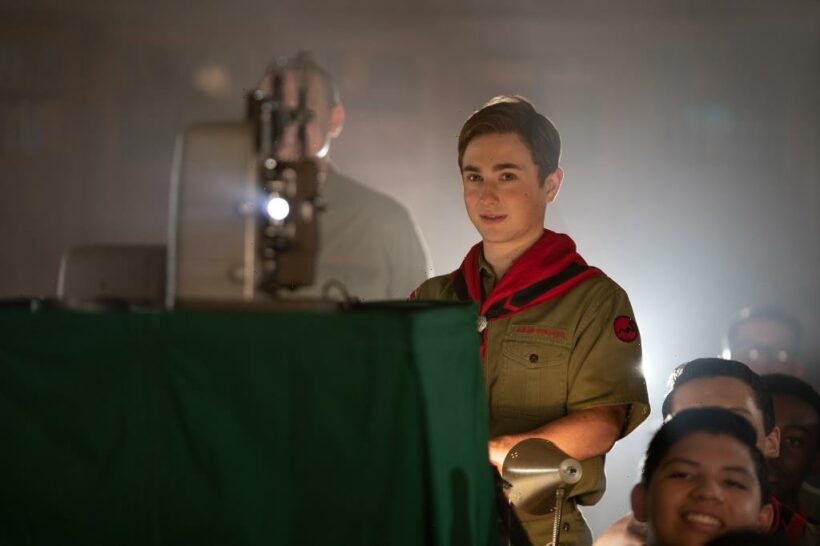Bringing a team together to make a movie places the director at the pinnacle of the decision-making pyramid. Everyone is, after all, working to serve their particular vision. However, transforming that model into one of true collaboration can make for a much sweeter success story.
Baz Luhrmann and Catherine Martin, the force behind this year’s “Elvis” biopic, have sustained a decades-long partnership, both personally and also professionally.
“I am in fact a serial collaborator,” Luhrmann has said of working with the same teams of people repeatedly, a method that has clearly resulted in commercial and critical success if Oscar nominations count as evidence.
The pair’s three other best known collaborations — “The Great Gatsby”, “Moulin Rouge!”, and “Romeo + Juliet” — garnered 11 Academy Award nominations among them. Four became wins for Martin’s costume and production design.
“Elvis” is a major Oscar contender this year with eight nominations reflecting Luhrmann and Martin’s efforts.
Part of the magic behind the Luhrmann-Martin collaboration seems to be in the ability to understand the other’s budding ideas. Martin has referred to herself as a “visual translator” for Luhrmann’s imaginings. It’s a skill the director himself has been impressed by, citing his imprecise sketches as particularly challenging to discern.
The shared commitment to extensive research seems to have been appreciated by audiences.
“You would imagine that people would be jumping on this [for inaccuracies or creative interpretation],” says Martin, “but I think it is a testament to Baz’s respect for the story, for the characters in the story, and for the extraordinary work that each of the actors did in creating their role that people accept the conception of the world.”
A potential concern behind a well-established partnership might be that the well of ideas could result in a dry spell. That hasn’t appeared to be the case for the Luhrmann and Martin partnership, nor with Steven Spielberg and production designer Rick Carter who have worked together for nearly 40 years now.
Spielberg and Carter’s latest endeavor together, “The Fabelmans,” is currently honored with seven Oscar nominations, including best director, best picture and best production design.
The two first met when Spielberg stepped in as the second unit director on “The Goonies” where Carter was the art director. Their relationship grew over a subsequent two years working on the television series “Amazing Stories.”
While Carter is clearly adept at bringing Spielberg’s vision to life, part of that may come from his welcoming encouragement of other crew contributions. (Case in point: the rare addition of sharing co-production designer credit with Robert Stromberg for James Cameron’s “Avatar,” leading to Carter’s first Oscar win in 2010.)
“I think there’s a whole other way of approaching production design, which I’ve made a point to do,” Carter has said. “that really entails not having territory. If I had territory, ten people could step on my toes.”
Willingness to do the job he’s hired for in honor of what’s best for the film, not himself, seems to have endeared him to the designers with whom he’s worked. Carter is clear he’s not the only designer who works with Spielberg and has said he’s “cast” for the role at Spielberg’s discretion.
Another duo who have worked together for about a decade and more recently came to more widespread prominence are the Daniels, a collective nickname for Daniel Kwan and Daniel Scheinert, the writer-director team behind “Everything Everywhere All at Once.” The film is currently up for 11 Oscars, including best original screenplay and best picture honors.
Kwan has said, “I think because we’ve been working together for so long, our ideas are very uniquely birthed from the fact that our brains have become a single entity, creatively, which is interesting and very scary at the same time.”
When Kwan originally pitched Scheinert, he was met with resistance but discussion continued, a spark ignited and the film was shaped.
Another powerhouse with the utmost circumspection for his projects is Tom Cruise. The actor-producer may not direct his films, but that doesn’t make his fingerprints any less obvious on “Top Gun: Maverick.”
The film shot its way to commercial success, followed now with six Oscar nominations, including best picture which would earn Cruise his first Academy Award as one of the film’s producers. (He has previously earned three acting nominations, with the first in 1990 for best actor in “Born on the Fourth of July.”)
Director Joseph Kosinski, who worked with Cruise on “Oblivion,” first pitched the concept of “Top Gun: Maverick” to Cruise while he was at work on the most recent “Mission: Impossible” iteration. He and producer Jerry Bruckheimer had 30 minutes to sell the actor who had been reticent to return to the character and that world.
Cruise leaves nothing to chance and his collaborative efforts include facilitating an entire training program for his fellow actors. Kosinski has said, “He approached the film as a whole, not just from the point of view of his character. So every single day, there is always a very collaborative conversation where you’re just pushing every scene, every shot, every idea in the film to its max.”
While collaboration can take many forms, at its heart is a willingness to teach and, concurrently, to be taught. When it came to “Elvis,” “The Fabelmans,” “Everything Everywhere All at Once,” and “Top Gun: Maverick” the key crew and cast all demonstrate that success isn’t a destination, but a journey with friends.
Read More About:
Source: Read Full Article
